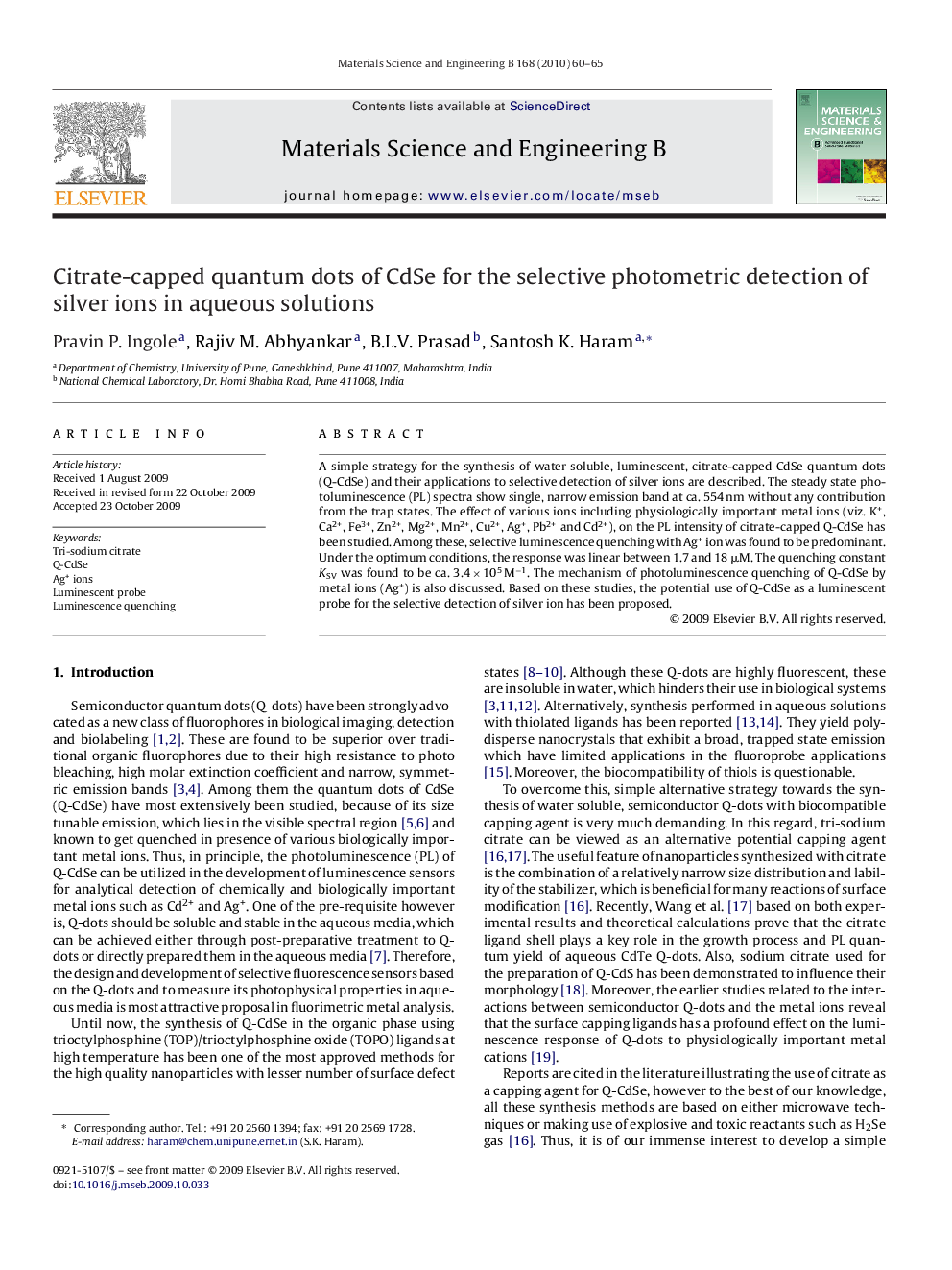| Article ID | Journal | Published Year | Pages | File Type |
|---|---|---|---|---|
| 1530406 | Materials Science and Engineering: B | 2010 | 6 Pages |
A simple strategy for the synthesis of water soluble, luminescent, citrate-capped CdSe quantum dots (Q-CdSe) and their applications to selective detection of silver ions are described. The steady state photoluminescence (PL) spectra show single, narrow emission band at ca. 554 nm without any contribution from the trap states. The effect of various ions including physiologically important metal ions (viz. K+, Ca2+, Fe3+, Zn2+, Mg2+, Mn2+, Cu2+, Ag+, Pb2+ and Cd2+), on the PL intensity of citrate-capped Q-CdSe has been studied. Among these, selective luminescence quenching with Ag+ ion was found to be predominant. Under the optimum conditions, the response was linear between 1.7 and 18 μM. The quenching constant KSV was found to be ca. 3.4 × 105 M−1. The mechanism of photoluminescence quenching of Q-CdSe by metal ions (Ag+) is also discussed. Based on these studies, the potential use of Q-CdSe as a luminescent probe for the selective detection of silver ion has been proposed.
Graphical abstractA simple strategy for the synthesis of water soluble, luminescent, citrate-capped quantum dots of CdSe (Q-CdSe) has been developed. The effect of various ions including physiologically important metal ions (viz. K+, Ca2+, Fe3+, Zn2+, Mg2+, Mn2+, Cu2+, Ag+, Pb2+ and Cd2+), on the luminescence intensity of citrate-capped Q-CdSe has been studied. Among these, a significant luminescence quenching only by Ag+ ions was observed which suggests the potential use of Q-CdSe as a luminescent sensor for the selective optical detection of silver ions in a physiological condition.Figure optionsDownload full-size imageDownload as PowerPoint slide
